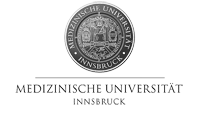|
|
 |
¹ Department of Pediatrics, Medical University of Innsbruck
² Department of Hygiene and Medical Microbiology, University of Vienna
Introduction: Lyme disease ist the most commonly reported tick-transmitted disease in the northern hemisphere, causing a wide spectrum of clinical symptoms. Early neuroborreliosis is the second most common manifestation of acute Lyme disease in Europe after erythema migrans. Early pediatric neuroborreliosis typically features aseptic meningitis and involvement of cranial nerves, espe-cially facial nerve palsy. Infection with Borrelia burgdorferi is diagnosed by a two step testing procedure e.g. ELISA followed by a confirmation test ( West-ern Blot ). Detection by culture is not commonly performed and reliable data about the success rate of PCR are not yet available. There exists nowadays no specific pediatric case definition of neuroborreliosis. According to the di-agnostic criteria of the german neurology association we can distinguish be-tween possible, probable and assured neuroborreliosis.
Objectives: Determination of the role of Lyme disease in the aetiology of acute peripheral facial palsy and evaluation of the diagnostic safety.
Patients and methods: The medical histories of 53 patients aged 3 months to 16 years ( mean 9.3 years ) with a new onset acute peripheral facial palsy between 2002 and 2005, were retrospectively evaluated.
Results: Antibodies against Borrelia burgdorferi were detected in 23 (43%) of the se-rum samples. IgM antibodies were noted in 21 patients, IgM and IgG antibod-ies in 13 patients and IgG antibodies alone, in 2 patients. Intrathecal antibody production of anti-Borrelia burgdorferi antibodies was detected in 4 (8%) CSF samples. 2 samples tested positive for IgM antibodies alone and another 2 samples for IgM and IgG antibodies. 11 (21%) children showed an increased protein content in the CSF and 19 (36%) children showed CSF pleocytosis. 18 of the 23 patients were treated with ceftriaxon for 2 weeks. No specific ther-apy was administered to 5 patients. Considering the diagnostic criteria of the german neurology association, 7 patients were diagnosed with a possible, 12 with a probable and 4 with an assured neuroborreliosis.
Conclusions: Lyme disease is a very relevant differential diagnosis of acute peripheral facial palsy in children. Our data can establish a basis for well defined guidelines for the diagnosis of pediatric neuroborreliosis.
Characters (no spaces) 1.960 (with spaces) 2.297
